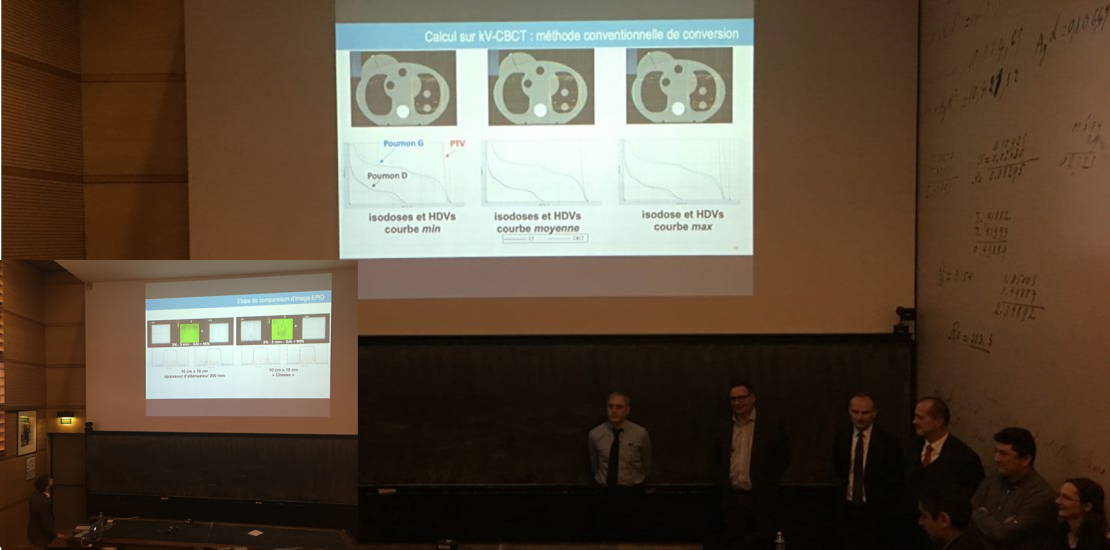- November 17, 2018
- Category: What's New

*Control of the dose delivered in external radiotherapy : study of the mutual contribution of on-board volume imaging and transit dosimetry
Clément Chevillard a,b in collaboration with DOSEO and The Institut Curie
a Paris Sud University
b PHENIICS Doctoral School
PhD Thesis completed on November 16th 2018
In external beam radiation therapy, the treatment is delivered to the patient with daily fractions using a schedule established earlier and repeated until the end of the treatment course. Treatment planning is fixed from the treatment planning system (TPS) based on anatomical information of the patient (CT, MRI, PET) and dose calculation algorithms.
Numerical imaging technology integrated to actual treatment units can be used to check the positioning of the patient and notice anatomical information (Electronic Portal Imaging Device – EPID-, Cone Beam Computed Tomography – CBCT). This information can be used to detect any deviation between planned and delivered dose.
The main goal is to develop a reliable solution for clinical routine to accurately assess the dose delivered to the patient with repect to the TPS dose.
The first aim of this work is to quantify and compare acquired portal images (EPID) at each fraction to the planned one (calculated using the planning CT exam). Using the 2D gamma index evaluation, discrepancy can be automatically detected according to a tolerance threshold defined by the user. The second aim is to integrate the kV-CBCT to reconstruct the delivered dose using a retrospective dose calculation in the patient according TPS dose model referential.
Using this kind of solution to detect discrepancy and for a retrospective dose calculation, it can be established a traceability of the treatment to identify deviation and assess security and treatment quality. This solution allows an identification of the root cause of the deviation and contributes naturally to adaptive radiotherapy strategies.
